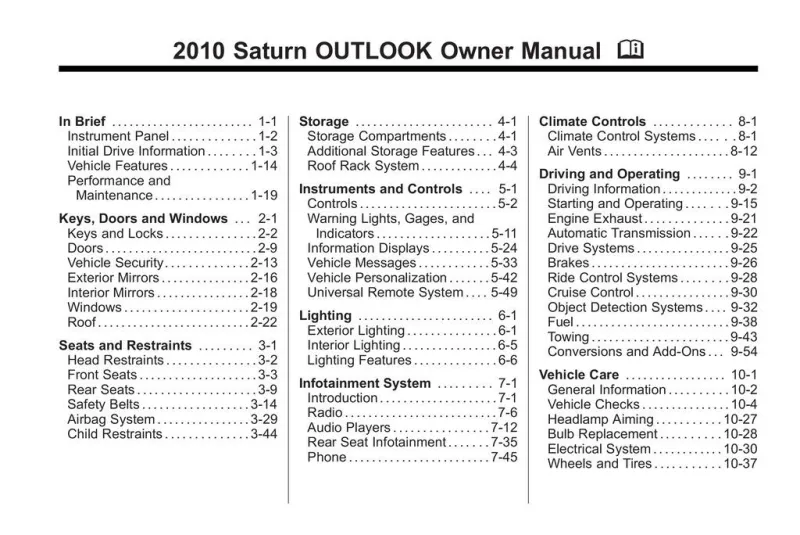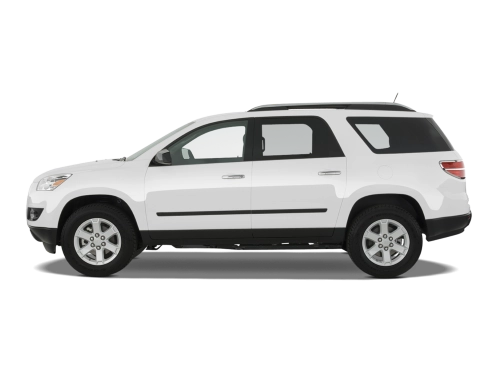2010 Saturn Outlook Owner's Manual

Table of Contents
2010 Saturn Outlook Overview
Introduction
The 2010 Saturn Outlook stands as a versatile midsize SUV that balances family-friendly design with a robust powertrain. Offering ample space for passengers and cargo alike, this model presents a delightful fusion of functionality and modern technology. With its smooth handling and confident road presence, the Outlook is tailored for those seeking an impressive ride without sacrificing comfort or safety.
Powertrains
The 2010 Saturn Outlook is powered by a 3.6-liter V6 engine, generating 270 horsepower and 248 lb-ft of torque. This engine is paired with either a 6-speed automatic transmission, ensuring smooth shifting and optimal fuel efficiency. Offered in both front-wheel drive and all-wheel drive configurations, the Outlook is adept at handling varying weather conditions while delivering a satisfying driving experience on highways and city streets alike.
Trims
Features
The 2010 Saturn Outlook is equipped with a range of high-end features that enhance both functionality and convenience. Standard offerings include tri-zone climate control, cruise control, and a full array of airbags for safety. Higher trims add features such as a rear entertainment system, Bluetooth connectivity, and a navigation system, ensuring that passengers enjoy their journey while staying connected and entertained.
Owner's Manual
The owner's manual for the 2010 Saturn Outlook serves as an invaluable resource for vehicle maintenance, operational instructions, and safety guidelines. It provides detailed information on the features and functions of the vehicle, promoting proper upkeep and ensuring that owners can maximize their driving experience. Whether it's routine service reminders or troubleshooting tips, the manual is designed to enhance ownership satisfaction and vehicle longevity.
User manual download
The Saturn Outlook owner manual for the 2010 model year is to be found in PDF downloadable format on this page. The owner manual for the model year 2010 is free and in English, but the repair manuals are usually not easy to get and may cost more.
Manual Questions
Fill the form below and someone will help you!

